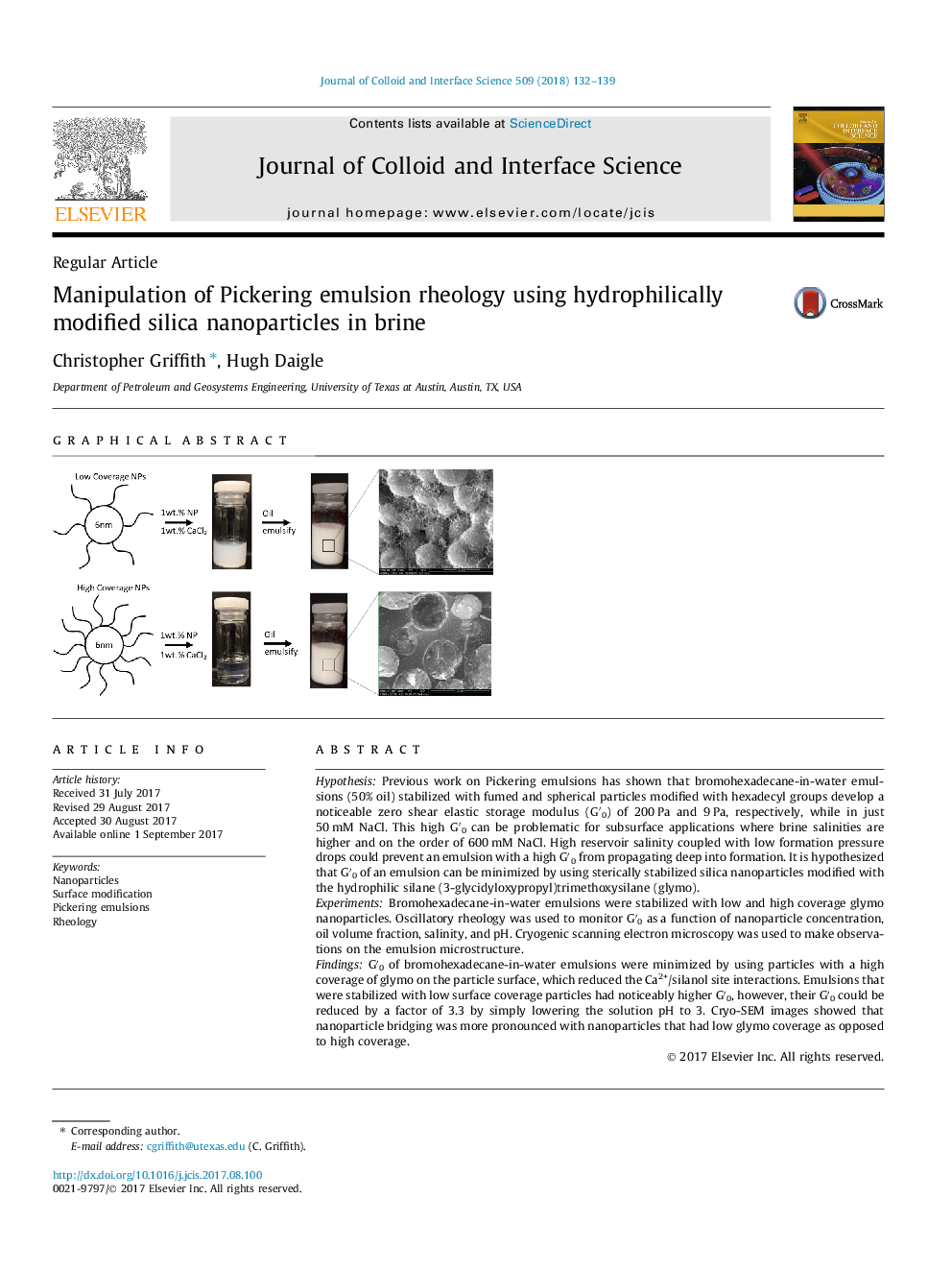| Article ID | Journal | Published Year | Pages | File Type |
|---|---|---|---|---|
| 4984279 | Journal of Colloid and Interface Science | 2018 | 8 Pages |
HypothesisPrevious work on Pickering emulsions has shown that bromohexadecane-in-water emulsions (50% oil) stabilized with fumed and spherical particles modified with hexadecyl groups develop a noticeable zero shear elastic storage modulus (Gâ²0) of 200 Pa and 9 Pa, respectively, while in just 50 mM NaCl. This high Gâ²0 can be problematic for subsurface applications where brine salinities are higher and on the order of 600 mM NaCl. High reservoir salinity coupled with low formation pressure drops could prevent an emulsion with a high Gâ²0 from propagating deep into formation. It is hypothesized that Gâ²0 of an emulsion can be minimized by using sterically stabilized silica nanoparticles modified with the hydrophilic silane (3-glycidyloxypropyl)trimethoxysilane (glymo).ExperimentsBromohexadecane-in-water emulsions were stabilized with low and high coverage glymo nanoparticles. Oscillatory rheology was used to monitor Gâ²0 as a function of nanoparticle concentration, oil volume fraction, salinity, and pH. Cryogenic scanning electron microscopy was used to make observations on the emulsion microstructure.FindingsGâ²0 of bromohexadecane-in-water emulsions were minimized by using particles with a high coverage of glymo on the particle surface, which reduced the Ca2+/silanol site interactions. Emulsions that were stabilized with low surface coverage particles had noticeably higher Gâ²0, however, their Gâ²0 could be reduced by a factor of 3.3 by simply lowering the solution pH to 3. Cryo-SEM images showed that nanoparticle bridging was more pronounced with nanoparticles that had low glymo coverage as opposed to high coverage.
Graphical abstractDownload high-res image (180KB)Download full-size image
